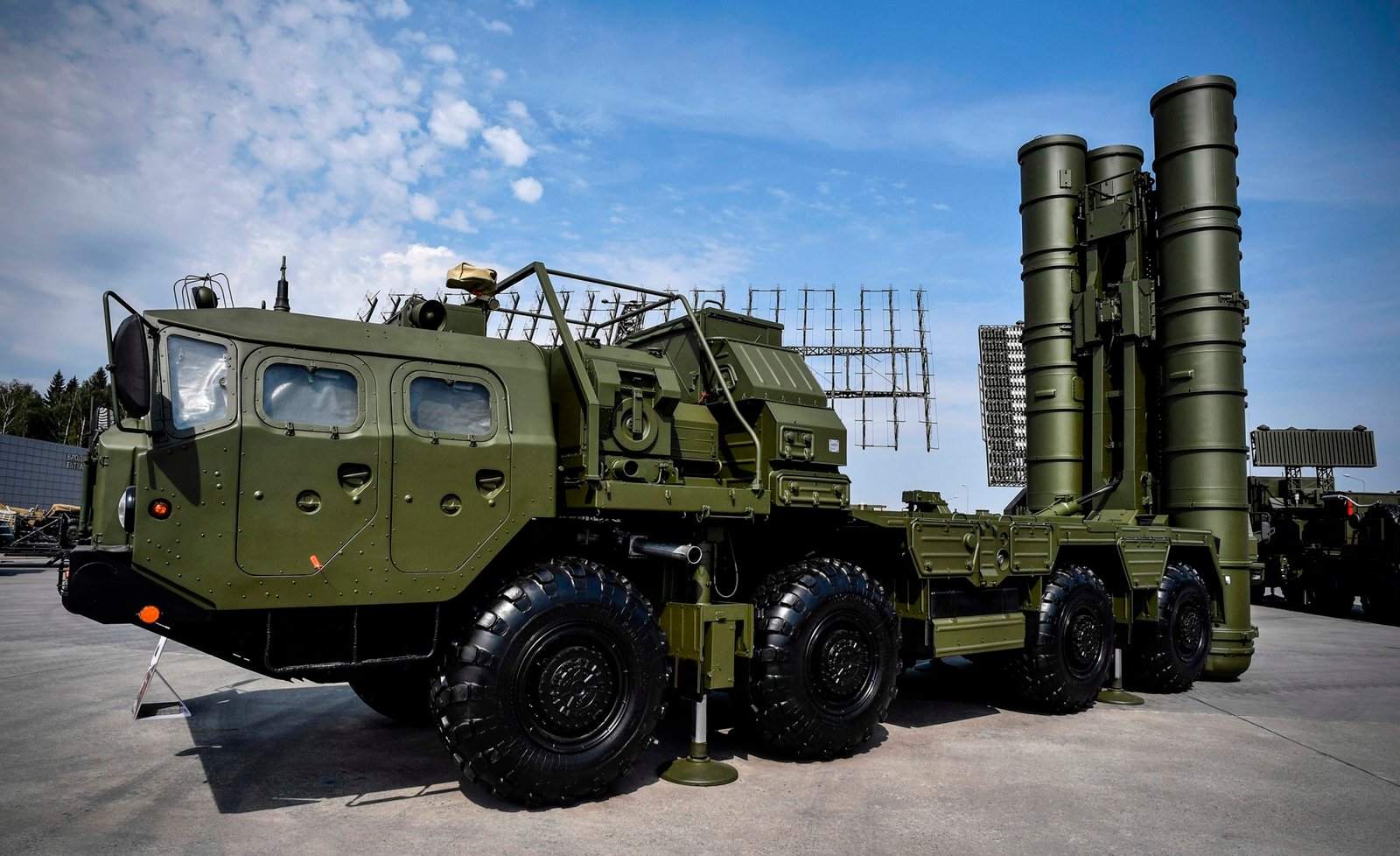
How Air Defence Systems Work
INTRODUCTION: WHY IN NEWS?
- Recent Context: India successfully thwarted aerial attacks from Pakistan along the western border. This marked a significant demonstration of India’s air defence capabilities.
- IAI Harop Drone Strike: India used IAI Harop loitering munitions—Israeli-made drones—to neutralize enemy threats, particularly targeting Pakistani air defence systems.
- This showcases India’s growing reliance on technology-driven warfare, especially using complex air defence systems that integrate hardware and software for national security.
POINT-WISE SUMMARY: HOW AIR DEFENCE SYSTEMS WORK
- Purpose of Air Defence Systems
- The primary goal is to detect, intercept, and neutralize threats from aerial objects like:
- Enemy aircraft
- Missiles (both cruise and ballistic)
- Drones or UAVs (Unmanned Aerial Vehicles)
- How They Work
- These systems involve a combination of:
- Radar systems to detect incoming threats
- Command and control units to assess danger and make real-time decisions
- Interceptor weapons like missiles or anti-aircraft guns to destroy the threat
- They are automated and integrated with other systems such as ground-based radars, airborne surveillance, and electronic warfare setups.
- The Role of Software and Intelligence
- Air defence isn’t just about firepower; it involves:
- Artificial Intelligence (AI) to differentiate between real threats and false alarms
- Tracking algorithms for multiple moving objects
- Data sharing across different units (ground, air, sea) for joint operations
CATEGORIES OF AIR DEFENCE SYSTEMS
- Interceptor Aircraft
- These are fast jets used to engage incoming aircraft or drones.
- Examples: MiG-21, Rafale, Sukhoi Su-30MKI.
- These aircraft can be scrambled instantly to intercept and neutralize threats.
- Ground-Based Missile Systems
- Include short-range, medium-range, and long-range missile systems.
- Designed to strike down enemy projectiles mid-air before they hit the target.
- Examples: Akash, S-400 Triumf, Barak 8.
- Anti-Aircraft Artillery (AAA)
- Use rapid-fire cannons or guns mounted on vehicles or stationary platforms.
- Effective against low-flying targets like drones and helicopters.
- Electronic Warfare (EW)
- These systems jam or mislead enemy radars and communication.
- Example: DRDO’s ‘Samyukta’ system can blind enemy surveillance temporarily.
COMPONENTS OF AN AIR DEFENCE SYSTEM
- Detection Systems (Radar)
- Radar units identify flying objects over long distances.
- Capable of differentiating between birds, drones, and missiles.
- Command & Control Centre
- Receives input from radars, satellites, and field units.
- Analyzes the speed, direction, and altitude of incoming threats.
- Decides when and what to fire (missiles or aircraft).
- Kill Systems
- Once a threat is confirmed, interceptors are launched.
- These can be surface-to-air missiles (SAMs) or aircraft-based weapons.
IAI HAROP: INDIA’S STRATEGIC LOITERING MUNITION
- What is the IAI Harop?
- A loitering munition (also known as a suicide drone) developed by Israel.
- Can fly around a target area and dive into a target once identified.
- Operates on autonomous decision-making with pre-fed algorithms.
- Role in India-Pakistan Conflict
- Used by India to strike Pakistani air defence systems.
- Chosen for its:
- Precision
- Low detectability
- Ability to neutralize high-value targets
- Effective in dense air defence zones where traditional missiles may not penetrate.
- Key Features of Harop
- Can hover for up to 6 hours.
- Carries high-explosive payload.
- Has a real-time camera feed for human-in-the-loop decision-making.
SUCCESSOR OF HARPY
- Harop vs Harpy
- Harop is an upgraded version of Harpy, offering:
- Electro-optical sensors
- Real-time operator control
- Wider operational range
- Used for suppression of enemy air defences (SEAD) missions.
STRATEGIC IMPORTANCE OF AIR DEFENCE
- Geographic Necessity
- India shares hostile borders with both Pakistan and China.
- Air defence becomes critical to secure:
- Military bases
- Cities
- Critical infrastructure
- Time-sensitive Warfare
- Attacks like missile launches give a few seconds of reaction time.
- Only automated and integrated defence systems can offer protection in such timeframes.
NOTES: TERMINOLOGIES EXPLAINED
Term | Meaning |
Loitering Munition | A drone that can wait over a target area and self-destruct on command |
Interceptor Aircraft | Fast jet used to destroy enemy aircraft or drones |
Surface-to-Air Missiles (SAMs) | Missiles fired from the ground to intercept aerial threats |
Suppression of Enemy Air Defence (SEAD) | Military operation aimed at disabling enemy air defence |
Electronic Warfare (EW) | Use of electromagnetic spectrum to disrupt enemy radars and communications |
Radar | Radio wave-based system to detect and track flying objects |
Command & Control Centre | Hub where decisions are made based on surveillance inputs |
Anti-Aircraft Artillery (AAA) | Cannons or guns used to shoot down enemy aircraft at low altitudes |
AI in Defence | Use of artificial intelligence to make real-time battlefield decisions |
RELEVANCE FOR CLAT ASPIRANTS
- CLAT 2026 GK and Current Affairs sections can ask:
- What are loitering munitions?
- What role did IAI Harop play in India-Pak conflict?
- What does SEAD mean?
- Legal Reasoning questions may also focus on international law implications of such strikes and self-defence under UN Charter.
CONCLUSION
India’s air defence architecture is a highly integrated multi-layered shield. The recent successful interception of Pakistani aerial threats and the precision use of IAI Harop drones highlight:
- India’s growing reliance on cutting-edge defence technology,
- The critical role of real-time intelligence and automation, and
- The strategic priority of protecting airspace in a high-threat neighborhood.
As warfare evolves, future conflicts will rely more on AI, drones, and loitering weapons, making it essential for civil service and law aspirants to stay updated on these technologies.
Note
- This Blog is Powered by CLAT Gurukul — India’s Leading Law Entrance Prep Platform
At CLAT Gurukul, we believe in empowering future legal minds with the right blend of knowledge, strategy, and mentorship. This blog is a reflection of our commitment to quality content that not only helps aspirants stay updated but also sharpens their conceptual clarity.
Why CLAT Gurukul?
- Personalized Mentorship by Top Legal Educators
- Comprehensive Study Materials & Legal Updates
- Daily Practice Sets, Mocks & Performance Tracking
- Result-Oriented Strategy for CLAT, AILET, and CUET
Whether you’re reading this article to deepen your understanding or to stay ahead in your exam prep — you’re already one step closer with CLAT Gurukul by your side.
Join thousands of successful aspirants who trusted CLAT Gurukul and cracked India’s top law entrance exams.
Visit www.clatgurukul.in to learn more or speak to our experts now!
- Note from CLAT Gurukul
At CLAT Gurukul, we are committed to providing free CLAT study material, including CLAT current affairs, legal reasoning practice sets, general knowledge updates, logical reasoning questions, English comprehension exercises, and more — all curated by top mentors.
Our blog section is regularly updated with high-quality CLAT content tailored to match the evolving pattern of the CLAT UG exam. Whether you’re looking for CLAT 2026 current affairs, CLAT legal reasoning passages, or mock practice sets, we have you covered.
We believe in open-access learning and will continue to publish free CLAT preparation resources to help serious aspirants succeed.
Explore more free content under categories like:
Best online coaching for CLAT, CLAT current affairs, CLAT GK updates, CLAT legal updates, CLAT logical reasoning, and CLAT English preparation.
For structured learning, daily mocks, and expert mentorship, visit www.clatgurukul.in — the Best CLAT Coaching in Patna and India’s most trusted platform for CLAT online coaching.
- For CLAT Legal Reasoning Blog Posts:
At CLAT Gurukul, we publish expert-level CLAT legal reasoning practice questions, case law-based passages, and constitutional law concepts to sharpen your application skills. These blog posts are updated regularly with CLAT-level legal questions, explanations, and strategies to help you master legal reasoning for CLAT 2026.
We ensure that all our content aligns with the official CLAT syllabus and includes current legal developments, landmark judgments, and statute-based questions.
Explore more under categories like:
CLAT legal updates, CLAT case-based passages, free CLAT legal reasoning PDFs, and Best online coaching for CLAT.
For full courses, live mentoring, and exclusive mocks, visit www.clatgurukul.in — the Best CLAT Classes in Patna and India’s leader in CLAT online coaching.
- For CLAT Current Affairs & GK Blog Posts:
Stay updated with our regularly posted CLAT current affairs and CLAT GK capsules — covering national, international, legal, and economic news relevant for the CLAT 2026 exam.
Our current affairs blogs include monthly compilations, legal news analysis, and static GK notes, curated by subject experts for CLAT GK preparation.
Find more in categories like:
CLAT current affairs 2025–26, legal GK for CLAT, important constitutional amendments, free CLAT GK PDF, and more.
Join the ranks of toppers who trust www.clatgurukul.in — the best online coaching for CLAT and the top-rated CLAT coaching in Patna.
- For CLAT Logical Reasoning Blog Posts:
Our CLAT logical reasoning practice sets are designed to boost your critical thinking and comprehension accuracy. We post argument-based questions, assumption-inference practice sets, and CLAT pattern logical reasoning exercises to help you score high in the reasoning section.
Visit blog categories like:
CLAT logical reasoning, statement-assumption questions, CR drills for CLAT, and free reasoning resources for CLAT aspirants.
For daily practice, mentorship, and test strategy, visit www.clatgurukul.in — the Best CLAT Online Coaching platform.






